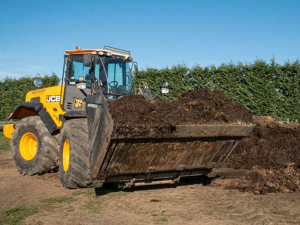This report came out in 2010 but received little coverage in the news media. Far more frequently we hear and read that “New Zealand’s potential will increase if we can get more rapid adoption of new technologies on farm”.
The ageing farmer workforce is often cited as a reason for lack of adoption.
However, as Warwick Lissaman, Blenheim farmer and vice-president of the Grassland Association points out, “The average age of farmers 20 years ago was 56.5, now it is 58. But we are all living more active lives for longer. Maturity and experience should be regarded as a strength.”
Greg Muir, chief executive of TruTest, has commented recently that New Zealand farmers as a whole are adopting electronic tracking at a much faster rate than farmers elsewhere. Certainly there is regulation to encourage uptake, but the value becoming apparent is in improving individual animal management and hence production and farm returns. As returns improve, the ripples spread and adoption increases.
Research from the Netherlands involving at least 1000 farmers reported that younger farmers are more likely than older farmers to adopt innovation. However, this effect was shown to be linked with education, and in New Zealand education in agriculture is high. Of more relevance for New Zealand are the findings that farms with larger businesses (spreading fixed costs for innovation) and more solvency (to pay for it) are more likely to innovate. This suggests that it might be the older farmers who are in the best position to adopt new technologies successfully because they know their business and so are likely to pick appropriately.
Lissaman, who has experience with monitor farms and on-farm research trials, sees that it is the mature farmers who are the innovators and adopters in New Zealand. “This is the group that has the confidence and money,” he says. “They know their knitting and new ideas and technologies should be tested with them to see if they have some real advantage on farm.”
The implication is that if farmers aren’t picking up new technologies as fast as was hoped, it might be something to do with lack of solvency or lack of apparent value. Certainly solvency is an issue for an increasing number of farms this year, as the Reserve Bank ‘fragility’ report indicates. But ‘lack of apparent value’ is also important.
Lissaman suggests “Farmers should be encouraged to invest in innovative practices and create the solutions, too. It is these people who have helped make the Innovation Index in agriculture what it is. More encouragement will result in even greater results.”
The Innovation Index report states that ‘Innovation will require collective investment and long term commitment from many stakeholders, including industry bodies, research institutions, universities, business leaders, government policymakers and investors.’
The translation is more research and improved collaboration between farmers, scientists, agri-business and policy: this is what the NZ Grassland Association has been encouraging and enabling for 75 years.
Improving innovation yet further will require not only encouragement of farmers, but also targeted investment of the money the farmers already provide through taxes, rates, levies and their co-operative companies.
Proving the worth of new technologies on-farm will enhance adoption, and improved returns will enable greater investment. Farmers in their prime of life hold the key.
• Jacqueline Rowarth is professor of agribusiness, The University of Waikato. She is also president of the New Zealand Grassland Association. www.grassland.org.nz
















